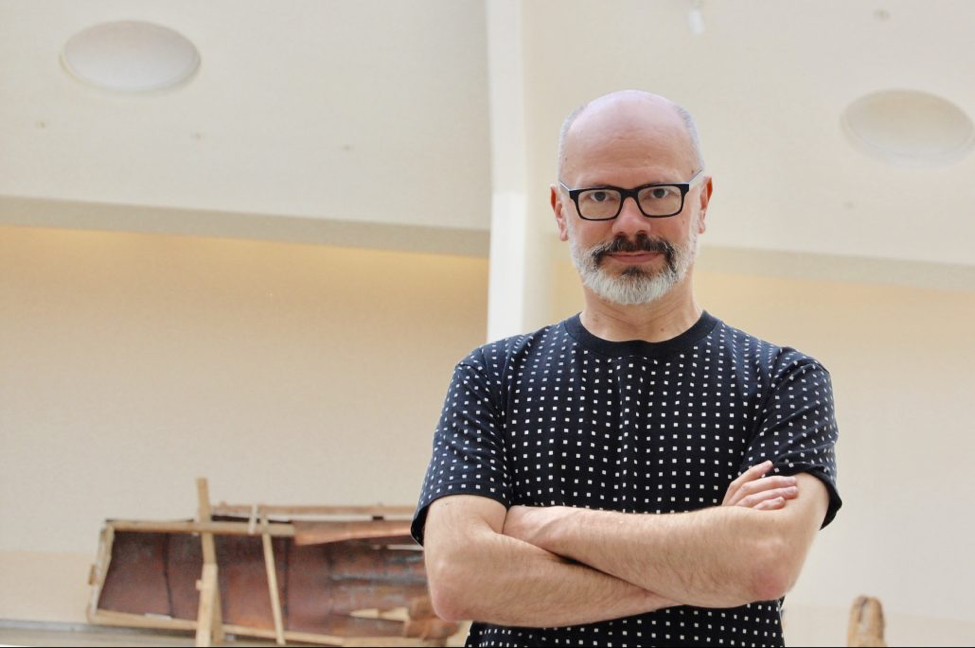Paul Henry Smith: Music, Technology and…Brownies?

Courtesy of Paul Henry Smith
Listen
Paul Henry Smith works at the intersection of music, technology, education, and business. His most recent project is a “cultural startup” called the Boston Symphonic Laboratory. You can listen to the entire interview above. Read until the end to learn why Mr. Smith brought brownies into the WHRB studio!
Pao: Rather than a concert or recording, the product of your Symphonic Laboratory is really the transformation of the musician. How will your Symphonic Laboratory be different from a private lesson or a group workshop?
Smith: …We learn from teachers who learn from masters who have passed the knowledge down from generations. So in that sense, it [the Symphonic Laboratory] is really no different. But what I’ve seen over the years is that a lot of that knowledge is kept very subjective and personal, which can be fine. But I think it’s too much on that side. There’s a lot of very practical information that’s left out of the process that has to do with precision and alignment. Currently there are many aspects of music…often left to chance, or to the mechanics of the instrument.
Pao: So I know that you’ve also done a lot of work in the past at the intersection of music and technology. I wanted to ask you, do you ever worry that technology could eventually replace musicians in the future? I know in your FauxHarmonic Orchestra, you kind of replaced the entire accompanimental orchestra with just digital recordings.
Smith: Yes. I have a confession to make now. To be clear, the FauxHarmonic Orchestra that you’re referring to is not an orchestra. It’s orchestra music made completely on the computer, which many people don’t know is incredibly common now. If you go to a movie – last night I went to see A Wrinkle in Time – I don’t know what percentage, but some large portion of the music is created on a computer. So it’s really taken over Hollywood. And I was working in that field for at least 10 years. I was an early adopter of it and made scores for Hollywood and television and even amusement rides in Holland, and it was a lot of fun, and you could make money doing it. But, here’s the thing. I don’t worry about it replacing musicians, to answer your question. Because I realized that the digital instruments don’t know anything. They’re really dumb. You know?
I just saw this morning that you can now buy a digital orchestra that’s created by Hans Zimmer – a famous movie composer, he’s won Oscars – that has 120 violins, 60 cellos, where they actually got that many people in London into a studio and recorded them all. And what do they do? They record them playing every single note, at every dynamic level, and many many other things, and you get terabytes of data, and as a composer or a performer you can buy that. Using just a Mac, you can put them together into a performance. That’s sort of what I used to do.
But when I say they’re dumb, what I mean is that that computer playing that first violin part doesn’t know that the next note it’s going to play after it plays this A is a C above it, and that that C is a high point of a phrase, and that it’s going to lead to the oboe next, that’s going to take that over. A human being knows: Oh, I know this A is leading to a C. I’ll give it a little shape, it’s going to grow over that A. I’ll connect it to the C, because that musical line is what we really listen to and latch onto. We don’t listen to note. note. note. That’s not music. That’s a series of sounds.
Pao: When you developed your app Cadenza, which provides orchestral accompaniment to famous concertos and other works, how did you overcome this and make it sound as realistic as possible.
Smith: Well, the orchestral accompaniment in Cadenza was actually recorded by real orchestras. That was a wonderful thing because in 1953 a guy named Irv Kratka went out and recorded orchestras playing all these concertos without soloists and released albums called Music Minus One. What I did was license all of that catalogue, and that was the background for Cadenza.
P****ao: So the only digital aspect is the way the tempo can be changed.
Smith: That is exactly right. And that is the really cool thing about it. Because these recordings, like all recordings, are frozen…With Cadenza, we could unfreeze these recordings and unlock their potential. Because the human being playing the instrument, by virtue of simply playing faster or slower, would morph the recording in real time to fit the space that they’re playing in.
Pao: To our listeners, Mr. Smith has brought brownies with him into the studio, which is definitely a first. How do these brownies relate to your project?
Smith: Well, first of all, it’s just a thank you for having me come in! But they are related, because you and I and Pablo [studio engineer] will dig into these brownies shortly. And you’re going to judge them. It’s inevitable. But you’re probably not going to take a bite of this brownie and say, “yeah, you know, I get it. It’s chewy, and chocolate-y, and that’s good and all, but it doesn’t really match the original intention of the recipe-writer.” It just seems silly to say something like that. But sadly, that is one of the limitations that we find in classical music all the time.
You can sign up to play in Paul Henry Smith’s Boston Symphonic Laboratory on April 7th here: http://www.symphoniclaboratory.com/
Allison Pao is a radio host for WHRB Classical. You can hear her feature “The Language of Music” which explores the intersection of music and literature on Fridays, 6-7pm.